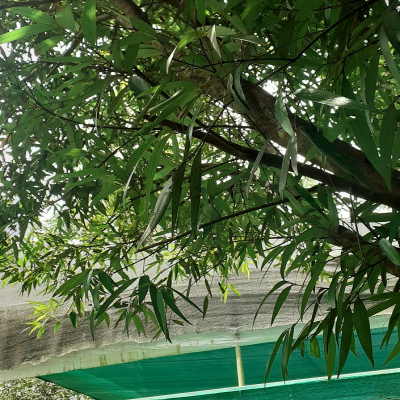Homonoia riparia Lour.
Family : Euphorbiaceae
Group : Diuretic/renal protectant
Parts Used : Root , Fruit , Leaf
Vernacular Names :-
| English | : | Homonoia |
| Malayalam | : | Attuvanchi, Kalluvanchi |
| Hindi | : | Jalbent |
| Sanskrit | : | Jalavetasah |
| Assamese | : | Hilkadam |
| Kannada | : | Sannapasanabela |
| Tamil | : | Kattuarali |
| Telungu | : | Sridamanu |
Distribution and Habitat: Seen throughout India, at lower elevations on the bank of rivers and streams especially among the rocks
Botany: Rigid evergreen willow-like shrub, young leaves and inflorescence pubescent. Bark dark grey or brown in colour.
- Leaves: Alternate, linear or linear – oblong, entire or less serrulate towards the apex, glabrous above and glandular scaly beneath, main nerves 10-30 pairs.
- Inflorescence: Flowers bracteate, sessile, dioecious. Male flowers- sepals 3, concave, glabrous, 3 mm long; stamens numerous, in globose heads. Female flower- sepals 5, 2.5 mm long; style 3, nearly 6 mm long, papillose.
- Fruits: Capsules, 0.8 cm in diameter, globose, tomentose. Seeds rounded on the back, smooth, yellowish brown.
Properties: Diuretic, antigonorrhoea, antisyphilitic
Chemical constituents: α-spinastoryl acetate
Uses: Haemorrhoids, vesical calculi, syphilis, odontalgia, ulcers, wounds, skin diseases
Formulations: Putikaranjasavam
Propagation: Seeds

